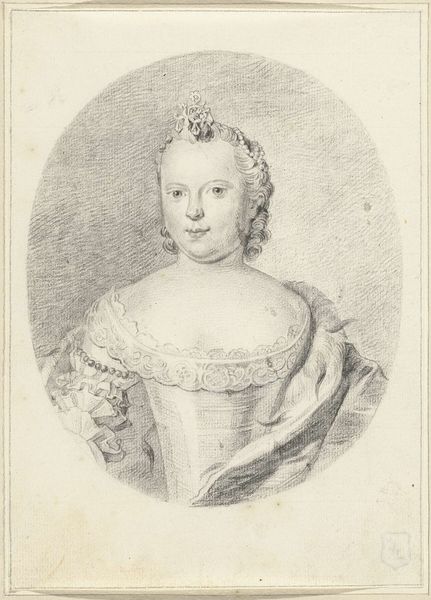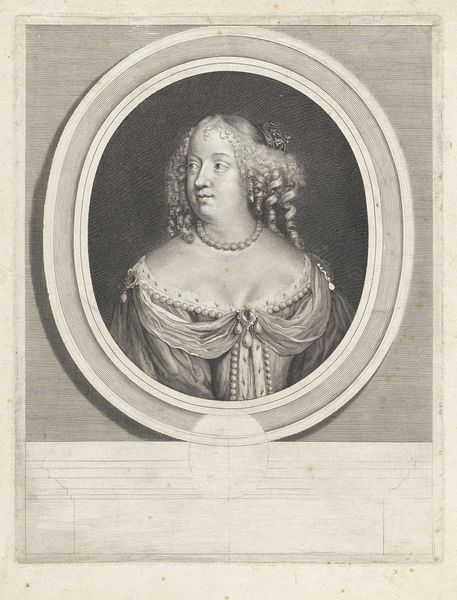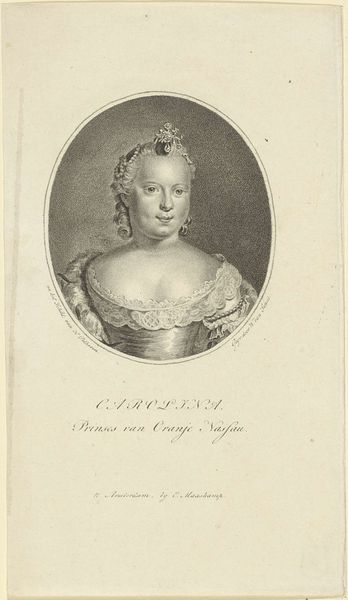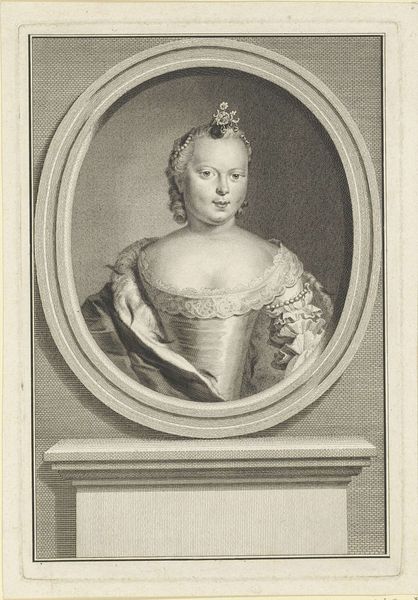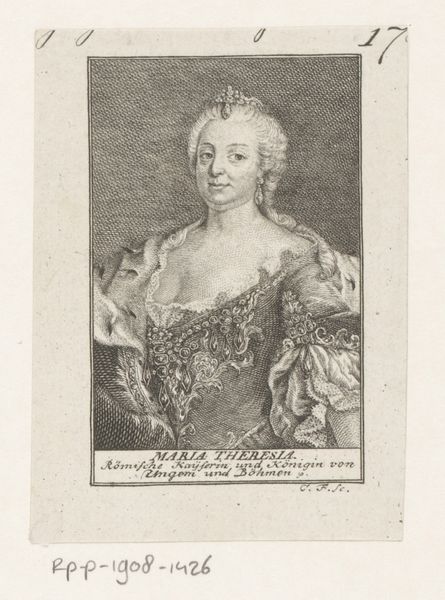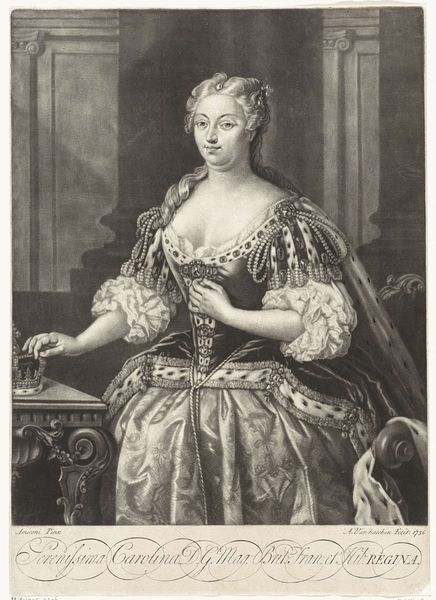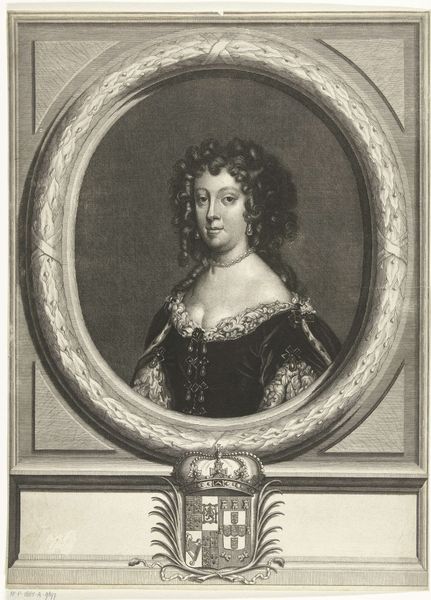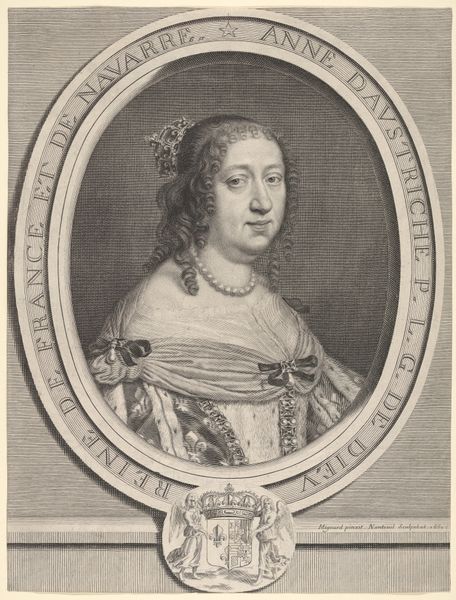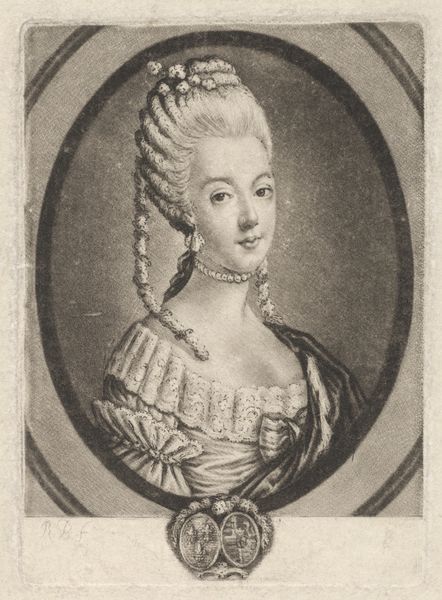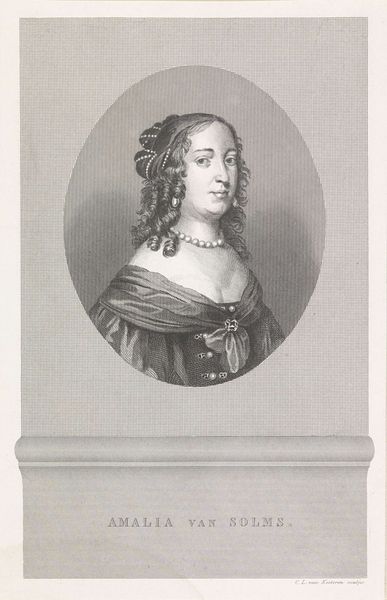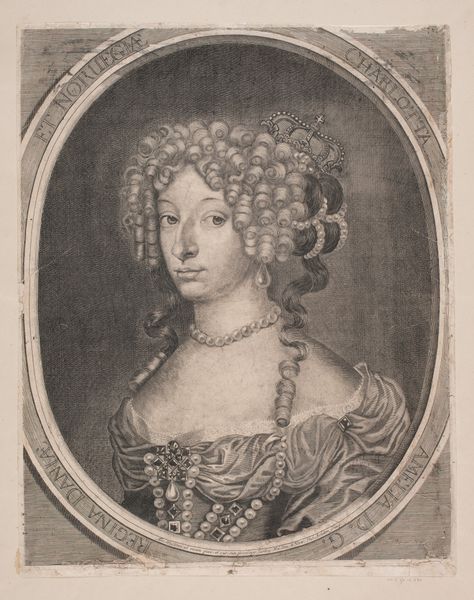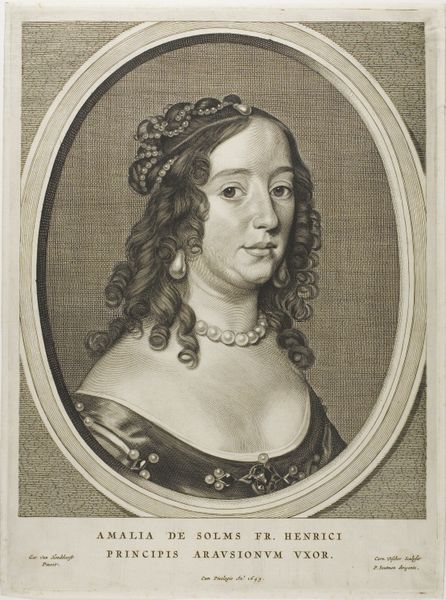
engraving
#
portrait
#
pencil drawn
#
neoclacissism
#
light pencil work
#
pencil sketch
#
old engraving style
#
pencil drawing
#
pencil work
#
history-painting
#
academic-art
#
engraving
Dimensions: height 195 mm, width 142 mm
Copyright: Rijks Museum: Open Domain
Curator: Standing before us is a finely rendered engraving, dating from around 1787-1834. It is titled "Portret van Carolina, prinses van Oranje-Nassau" and is currently housed here at the Rijksmuseum. Editor: There's a delicacy to the hatching here, an almost gossamer quality, despite the formality implied by the subject’s status. It strikes me as both intimate and distant. Curator: Indeed. Carolina, Princess of Orange-Nassau, lived through a turbulent period, witnessing revolution and political upheaval. As a woman of power and privilege in a shifting social landscape, her story is often overlooked in dominant historical narratives. This portrait, by Willem van Senus, can act as a keyhole into the experiences of women navigating such power structures at the time. Editor: I'm drawn to the composition itself. The oval frame tightly contains her image, concentrating our gaze on her face, the light catching the subtle contours. Semiotically, it almost suggests a trapped feeling despite her crown. There’s a visual tension that speaks to constraint, don't you think? Curator: Certainly. And considering the rigid expectations placed upon women of her rank to maintain dynastic alliances and project unwavering support for established systems, that sense of constraint would become embodied and manifest within her own actions and choices. That tight framing then begins to act as a metaphor for that feeling, resonating strongly. Editor: Note the detail in her crown, though—the precise execution is magnificent—the tiny points that pull the light, the exact placement that seems so essential in conveying royal lineage and status within this very reduced palette of light and shadow. It's about power—rendered almost surgically through very fine hatching lines. Curator: And the lace at the gown, too, speaks to how clothing, even then, was a form of silent protest or a loud statement of political alignment. Editor: Agreed. Overall, technically impressive in terms of linework and its neoclassical ideal of capturing not only likeness but presence and that status we’ve already talked about, no? Curator: Definitely, though perhaps understanding her wider impact—her role, as it were, in maintaining political structures—also allows us a far more nuanced perspective to consider what portraiture as an elite form has really communicated through the ages. Editor: I find it impressive in terms of conveying character through such limited means, and that Neoclassical element shines. It will be on my mind!
Comments
No comments
Be the first to comment and join the conversation on the ultimate creative platform.
